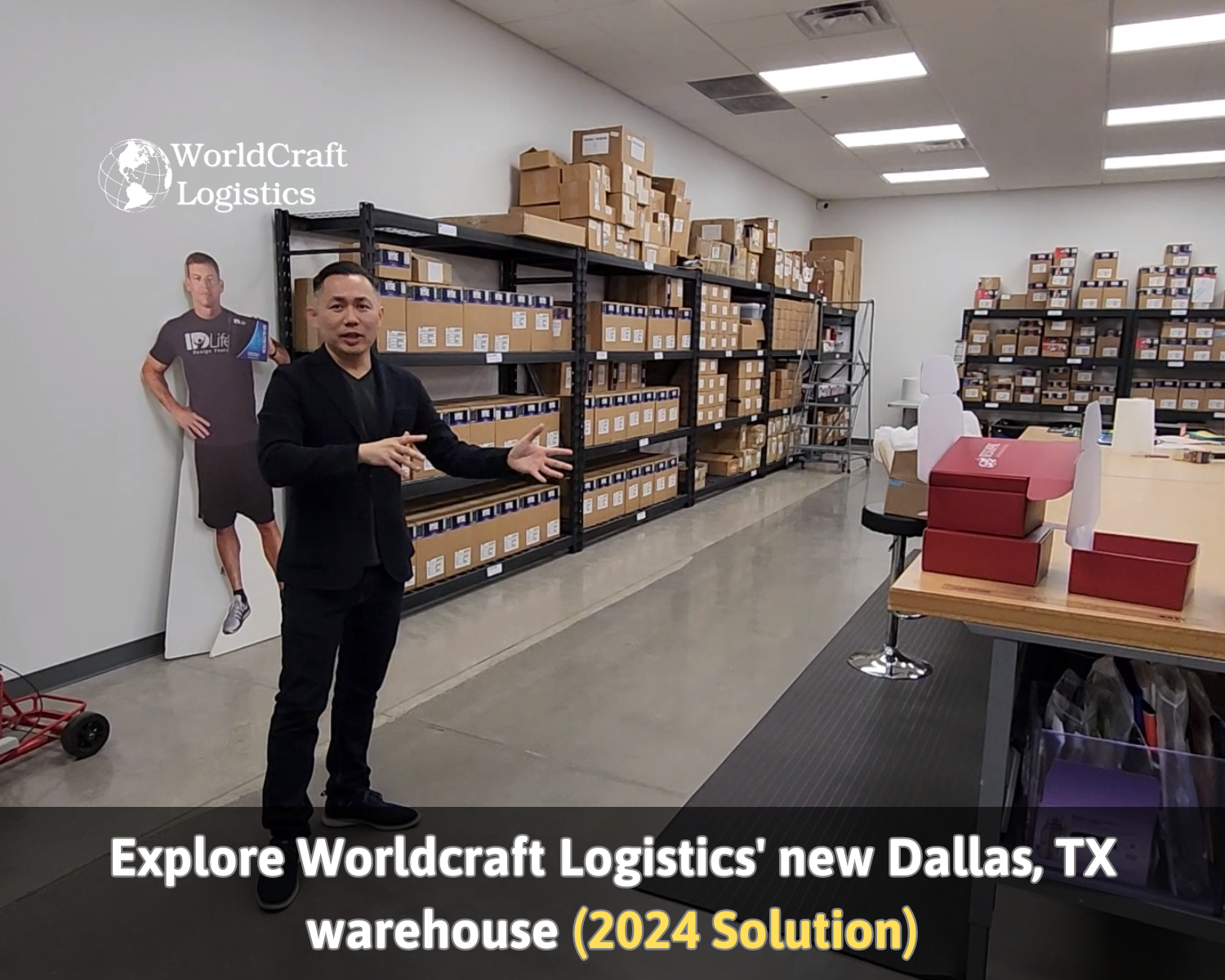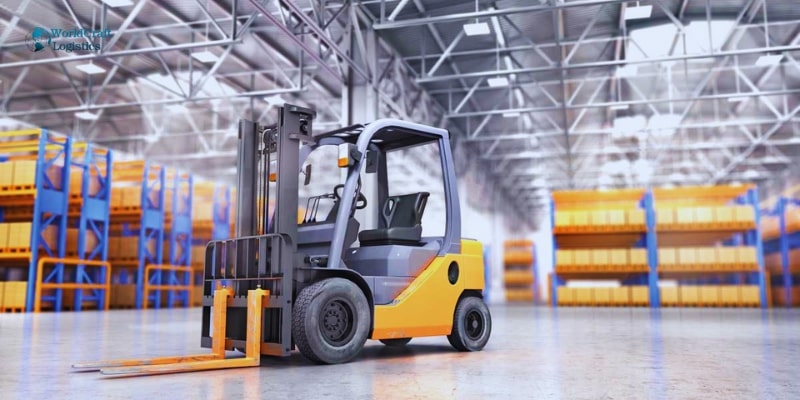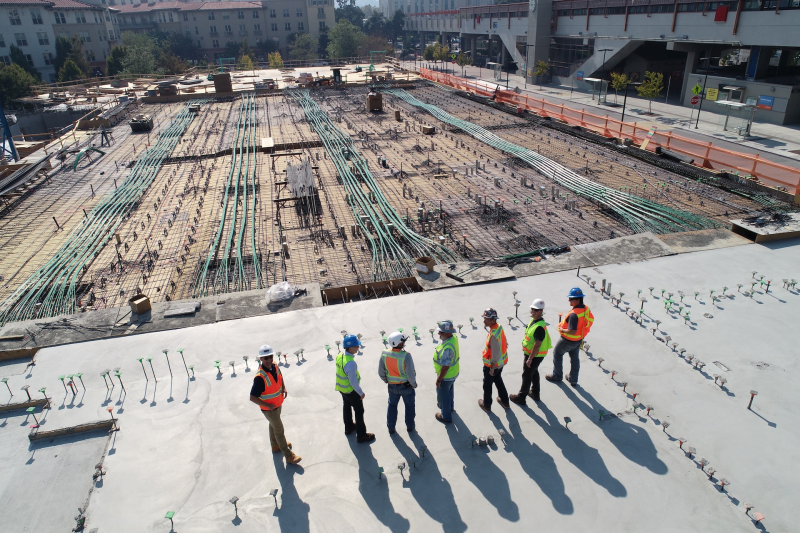In the intricate dance of logistics, the method by which goods are loaded for transportation holds a pivotal role - especially when faced with the decision between floor loading and palletizing. Each approach carries its own set of nuances, impacting everything from efficiency to cost considerations. As we embark on this exploration of the age-old debate Floor Loading vs. Palletizing - it becomes evident that the choice between the two is not merely a matter of preference but a strategic decision that ripples through the entire supply chain. Let's delve with Worldcraft Logistics into the intricacies and weigh the pros and cons of each, unraveling the tale of cargo loading methods in the world of logistics.

1. What is Floor Loading?
Floor loading means placing goods directly on the floor of a transport vehicle without using pallets. It offers flexibility in arranging items but can be labor-intensive. This method is suitable for irregularly shaped or oversized cargo, optimizing space within the vehicle.

Here are some related articles you may find interesting: 10 Reasons the Retail Industry Should Invest in a Last-Mile Delivery Solution
Pros and Cons of Floor Loading
It's important to note that floor-loading can cut freight costs as the entire container is utilized for product loading, eliminating the need for pallet expenses. This often results in fewer containers needed for shipping.
However, this loading method isn't universally suitable. Delicate or fragile products pose a risk as the chances of damage increase. Floor loading is better suited for heavy and bulky items like tires, carpets, and pipes.
Consider the added labor costs associated with packing and unloading a floor-loaded shipment. This process is labor-intensive and time-consuming, requiring a thorough cost-benefit analysis for businesses. Every shipment must be manually loaded and unloaded, emphasizing the need for careful consideration of time and labor costs before opting for this approach.

2. What is Palletizing?
Palletizing is a method where goods are placed and secured on pallets before loading onto a vehicle. It offers efficiency, standardized sizes, and protection. Though faster, it comes with costs such as pallet expenses and the need for specialized equipment.

Pros and Cons of Palletizing
The widespread preference for pallets in global shipping, including the USA, is rooted in practical advantages such as:
- Palletization transforms numerous smaller boxes into a unified, robust unit, enhancing cargo security.
- Elevating cargo from the container floor serves as protection in case of water spillage.
- Standardized pallet dimensions ensure a seamless fit into containers, simplifying logistics.
- The pre-set calculations for pallet requirements eliminate the need for complex algorithms.
- Pallets are easily maneuvered during loading or docking, accommodating both LTL and FTL freight.

However, shippers using UPS and FedEx in the USA encounter restrictions. These couriers often require the use of their in-house freight services for pallet pickups. FedEx Freight mandates palletization for its transit services, while UPS remains flexible, accepting unpalletized boxes when using its in-house freight service.
3. What’s the Difference Floor Loading vs Palletizing?
When deciding between floor loading and palletizing, it's crucial to recognize that neither option holds an inherent superiority. Each method serves its purpose, contingent upon a business's specific projects, products, and priorities. Considering this, let's delve into the optimal scenarios for employing floor loading and palletizing in freight shipping.

3.1 When to use floor-loaded containers
- Cost Efficiency: Floor-loaded containers, by filling the entire container with goods and avoiding pallet shipment costs, often result in lower overall freight expenses. This can also translate into the need for fewer containers, maximizing efficiency.
- Bulky and Durable Items: If you're transporting robust and sizeable items like tires, metal coils, logs, or pipes, floor loading is a suitable choice.
- Unboxable Items: Items that are challenging to box find a fitting transport solution with floor loading.
While cost savings on shipping are notable, it's essential to weigh them against potential labor costs for manual sorting and loading by warehouse workers.
3.2 When to use pallet-loaded containers
- Long-Distance Transport: Palletizing is the standard for long-distance freight shipping, minimizing the risk of damage during transit.
- Fragile or Delicate Items: Pallets provide enhanced security, making them ideal for transporting fragile or delicate items that may be prone to breakage in floor-loaded containers.
- Oddly Shaped Items: When items have unconventional shapes and cannot be stacked, pallet loading is a more practical option.
- Protection from Water Damage: Elevating items off the container floor through palletization safeguards them from potential water damage.
- Cost-Benefit Analysis: If the cost of additional labor for manual sorting and loading is outweighed by the added shipping expenses, palletizing becomes the preferred choice.
In essence, the decision between floor loading and palletizing hinges on a thoughtful evaluation of the specific characteristics of the cargo, transportation needs, and associated costs.
This article is for you to learn more about the logistics industry: Deciphering FCL and LCL: Choosing the Right Shipping Method
4. Businesses should choose Floor Loading or Palletizing?
Consider your budget and time constraints when deciding between pallets and floor loading. While pallets incur additional costs, they save time in the loading and unloading process. Floor loading may seem cost-effective initially, but manual handling introduces labor costs and time expenditures.
Companies like Amazon lean towards pallets, imposing restrictions on floor loading in their FBA contracts.
Pallets shine in e-commerce shipping, offering quick processing by 3PL partners with added security, even during multi-modal journeys. However, for those seeking cost efficiency, floor loading is an option, especially for larger, bulkier, and durable items or items with unconventional shapes.
In summary, the choice between pallets and floor loading involves weighing risks and costs. Pallets are compact, secure, and easily transportable but come at a higher expense. On the flip side, floor loading allows economical packing of large items but demands manual loading and unloading. Conducting a thorough cost-benefit analysis will guide the decision-making process.
5. Ship with in USA Truckload Shipping - Worldcraft Logistics LLC.

No matter how you choose to transport your freight, Worldcraft Logistics ensures timely delivery. Our extensive network nationwide empowers us to overcome any logistical challenges your shipment may encounter.
Worldcraft Logistics is equipped to handle a diverse range of items, whether they demand floor loading or palletizing. Explore our freight services page for comprehensive coverage, including refrigerated shipments among various other types.
Our commitment at Worldcraft Logistics is to ensure your satisfaction with the services we offer. Connect with our team today, and let us assist you on your shipping journey.
5.1 See what our partners have to say
Paula K.: "Worldcraft Logistics truly exceeded my expectations with their pallet transport service. The efficiency in loading and unloading was remarkable, saving us both time and labor costs. Their attention to detail ensured the safe delivery of our fragile items. A reliable partner for streamlined logistics."
Carlos L.:"Worldcraft Logistics has been our go-to for both pallet and floor transport services. Their flexibility to cater to various cargo types, whether it's the efficiency of pallets or the cost-effectiveness of floor loading, makes them a versatile choice. Dependable, responsive, and a true partner in our shipping success."
Sarah B.:"I've been using Worldcraft Logistics for refrigerated shipments, and their attention to temperature-sensitive cargo is commendable. Whether it's floor loading or palletizing, they've consistently ensured the integrity of our goods. Their commitment to customer satisfaction truly sets them apart."
5.2 Issues that may concern
Why is it essential to know about floor loading and palletized loading?

The loading methods wield significant cost implications in the eCommerce fulfillment process. Hence, it is imperative for both eCommerce sellers and their shipping partners to familiarize themselves with the advantages and disadvantages of floor and palletized loading to make well-informed decisions. Beyond cost considerations, taking into account the volume and nature of the products slated for shipment is equally crucial.
Example of selecting between floor loading and palletized loading
Indeed, palletized shipments shine when delicacy is paramount, making them ideal for transporting fragile items like glassware. On the flip side, floor loading proves its mettle with robust and bulky cargo, exemplified by the likes of steel tanks. In the realm of cost-effectiveness, floor loading takes the lead, leveraging the entire container space for optimal efficiency. The choice between these loading methods boils down to the nature of the items being shipped and the economic considerations at play.
In conclusion, the choice between floor loading and palletizing is a critical decision that can significantly impact the efficiency and safety of your logistics operations. At Worldcraft Logistics, we understand the unique challenges and requirements of each approach. Our commitment is to provide tailored solutions that not only optimize your cargo handling but also enhance the overall supply chain performance.





